|
 ENGLISH BOOKS ENGLISH BOOKS 
RESOURCES ON JAPANESE BUDDHISM
The books below are highly recommended.
All were used as reference material for this site.
Click any link or image to purchase book at Amazon.
|
|
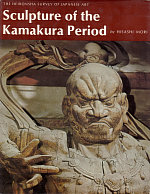  Sculpture of the Kamakura Period Sculpture of the Kamakura Period
by Hisashi Mori, from the Heibonsha Survey of Japanese Art.
Published jointly by Heibonsha (Tokyo) & John Weatherhill Inc.
A book close to my heart, this publication devotes much time to the artists who created the sculptural treasures of the Kamakura era, including Unkei, Tankei, Kokei, Kaikei, and many more.
ISBN 0-8348-1017-4
1st Edition 1974
|
|
 Great Age of Japanese Great Age of Japanese
Buddhist Sculpture 600 to 1300 AD.
By Nishikawa Kyotaro, Kyotaro Nishikawa, and Emily J. Sano. Catalog of the first exhibition of classic Japanese sculpture to tour the United States. The period represented was the definitive age in the history of this art form, encompassing its introduction from Korea, its assimilation, flourishing, and decline. Paperback. 151 pages. Published by Art Media Resources (January 1982). English. ISBN: 0912804084.
|
|
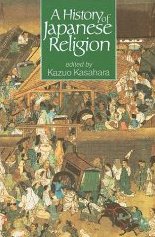
A History of Japanese Religion
Edited by Kazuo Kasahara. Kosei Publishing Company, 2002.
Translated by Paul McCarthy and Gaynor Sekimori. 648 pages.
Sixteen distinguished experts on Japanese religion approach the topic from modern perspectives. Topics range from prehistoric times up until the early postwar years.
Click here to read review of book by scholar
Paul L. Swanson.
|
|
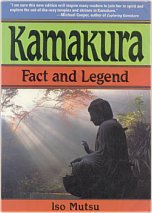 Kamakura: Kamakura:
Fact and Legend
by Iso Mutsu
Charles E. Tuttle Company
First released in 1918, but since reprinted with updates, this book offers detailed descriptions of more than 40 temples in Kamakura, including anecdotes and many details about various Buddhist deities.
ISBN: 0804819688
|
|
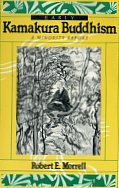 Kamakura Buddhism: A Minority Report Kamakura Buddhism: A Minority Report
by Robert E. Morrell. Asian Humanities Press, 1987.
ISBN 0-89581-850-7.
Modern views of Kamakura Buddhism rest largely on interpretations by the heirs of its successful innovators -- the Zen, Nichiren, and Pure Land movements. The Establishment is represented merely as the hostile background against which the currently accepted heroes of that age had to struggle to create their brave new world. In this "Minority Report," four leaders of the traditional older sects present their side: Tendai's Jien, Hosso's Jokei, Kegon's Myoe, and Shingon's Kakukai.
|
|
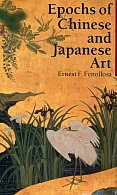 Epochs of Chinese and Japanese Art Epochs of Chinese and Japanese Art
by Ernest F. Fenollosa
Published by ICG Muse Inc.
ISBN 4-925080-29-6.
English. Originally published in 1912, but new edition in 2000. Although Fenollosa’s views on art history are often discredited by modern art historians, this is still an excellent book on Buddhist sculpture in Japan.
|
|
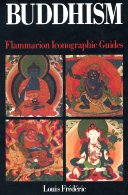 Buddhism: Buddhism:
Flammarion Iconographic Guides
by Louis Frederic, Printed in France
ISBN 2-08013-558-9, First published 1995.
A highly illustrated volume, with special significance to those studying Japanese Buddhist iconography. Includes many of the myths and legends of mainland Asia as well, but its special strength is in its coverage of the Japanese tradition. Hundreds of accompanying images/photos, both B&W and color. A useful addition to your research bookshelf.
|
|
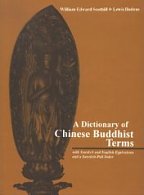 Dictionary of Chinese Buddhist Terms Dictionary of Chinese Buddhist Terms
With Sanskrit & English Equivalents
Plus Sanskrit-Pali Index.
By William Edward Soothill & Lewis Hodous
Hardcover, 530 pages.
Published by Munshirm Manoharlal.
Reprinted March 31, 2005.
ISBN 8121511453.
|
|
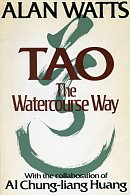 Tao: The Watercourse Way Tao: The Watercourse Way
by Alan Watts and Al Chung-liang Huang
134 pages, English.
ISBN 0-394-73311-8
A classic on Tao.
English text supplemented
with wonderful Chinese calligraphy.
|
|
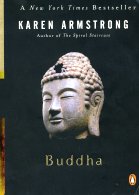 Buddha Buddha
by Karen Armstrong
205 pages, English.
ISBN 0-14-303436-7
First Published 2001.
Many know the Buddha only from the serene statues one sees everywhere. But what of the man himself and the world he lived in? Renowned religious scholar Karen Armstrong answers these questions and more in this examination of the life and times of the Historical Buddha.
|
|
Reading Buddhist Art: An Illustrated Guide to Buddhist Signs & Symbols. ISBN 0-500-28428-8, Published 2002 by Thames & Hudson. By Meher McArthur, the curator of East Asian Art at the Pacific Asia Museum (Pasadena).
|
|
 Chinese Mythology: Chinese Mythology:
Encyclopedia of Myth and Legend
by Derek Walters.
Publisher Harpercollins (Jan. 1993)
ASIN: 1855380803
|
|
Japanese Journal of Religious Studies
A semi-annual journal dedicated to the academic study of Japanese religions. First published in 1960 as Contemporary Religions in Japan, it was given its present name in 1974. The journal was taken over by the Nanzan Institute in 1981.
|
|
 Jizo Bodhisattva. Jizo Bodhisattva.
Modern Healing & Traditional Buddhist Practice.
By Jan Chozen Bays, a Zen master in the lineage of Maezumi Roshi and a member of the White Plum Sangha. She is also the spiritual head of the Great Vow Zen Monastery in Clatskanie, Oregon. Published 2002 by Tuttle Publishing. ISBN 0-8048-3189-0
|
|
 China and Japan Myths and Legends China and Japan Myths and Legends
by Donald A. Mackenzie
Publisher Bracken Books (Jan. 1986)
ASIN: 1851700161
|
|
Dictionary of Chinese and Japanese Art
by Hugo Munsterberg. Publisher Hacker Art Books (Jan. 1982)
ASIN: 0878172483. Helpful dictionary (no illustrations) covering artists, media, motifs, dynasties, schools, concepts, etc.
|
|
 Encyclopedia of Eastern Philosophy and Religion Encyclopedia of Eastern Philosophy and Religion
Survey of the Teachers, Traditions, and Literature of Asian Wisdom. Paperback: 468 pages. Publisher: Shambhala; Reissue Edition May 10, 1994. Language: English. Does not include Chinese or Japanese characters; only romanized versions for all languages. ISBN 0877739803.
|
|
 Shambhala Dictionary of Buddhism and Zen Shambhala Dictionary of Buddhism and Zen
Over 1,500 entries & 46 illustrations. Designed to help students, meditators, and all readers learn the key Buddhist terms/concepts. Paperback. 280 pages. Publisher Shambhala. 1st Edition November 26, 1991. Language English. Does not include Chinese or Japanese characters; only romanized versions for all languages. ISBN: 0877735204
|
|
 Buddhist Symbols in Tibetan Culture Buddhist Symbols in Tibetan Culture
by Dagyab Rinpoche, Robert A. F. Thurman
Paperback. 168 pages. Publisher: Wisdom Publications (November 25, 1996). Language English.
ISBN: 0861710479
|
|
 Buddhist Scriptures by Donald Lopez (Editor) Buddhist Scriptures by Donald Lopez (Editor)
A rich anthology that brings together works from a broad historical and geographical range, from such languages as Pali, Sanskrit, Tibetan, Chinese, and Japanese. Paperback. 608 pages. Publisher Penguin Classics. New Ed Edition August 31, 2004. Language English. ISBN 014044758X
|
|
 Dragon in China and Japan Dragon in China and Japan
by M. W. De Visser
First Published in 1913. Paperback.
256 pages. Publisher Kessinger Publishing (May 2003). Language English. ISBN 076615839X.
|
|
 Talking about Buddhism Talking about Buddhism
by Takada Yoshihito and James M. Vardaman Jr.; Bilingual Books, 1997, Kodansha International Ltd. ISBN 4-7700-2161-5. English and Japanese, 230 pages. Simple primer for beginners, covering history, people, deities, and sects. Good training for those wanting to improve their Japanese. |
|
 Illustrated Who's Who of Japan Illustrated Who's Who of Japan
192 pages covering 100 historical personages. Simple primer for beginners. Lots of line art and drawings. English Language, No Photographs. Japan Travel Bureau Inc., 1991. ISBN 4-533-00798-8
|